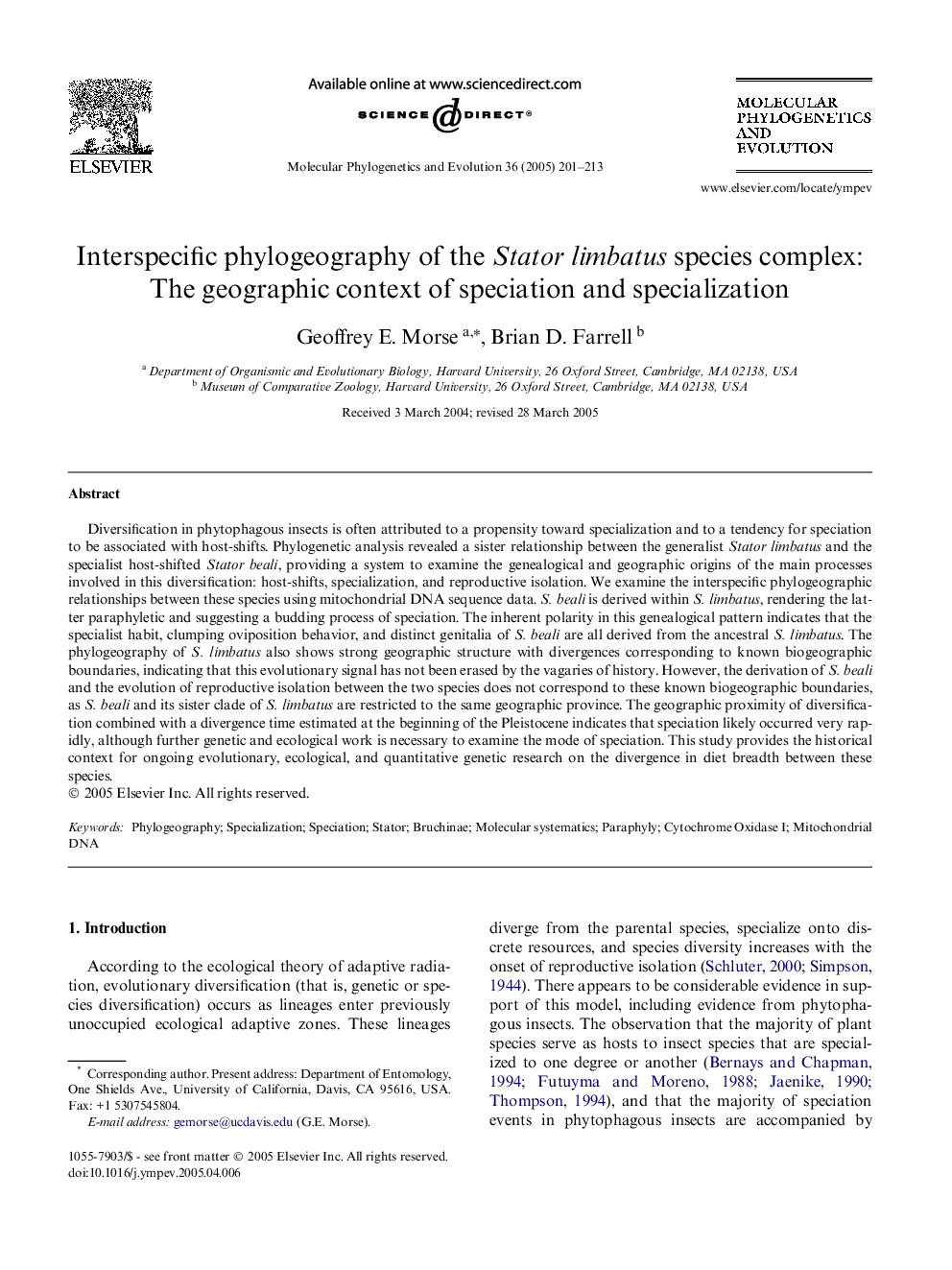| کد مقاله | کد نشریه | سال انتشار | مقاله انگلیسی | نسخه تمام متن |
|---|---|---|---|---|
| 9143136 | 1164378 | 2005 | 13 صفحه PDF | دانلود رایگان |
عنوان انگلیسی مقاله ISI
Interspecific phylogeography of the Stator limbatus species complex: The geographic context of speciation and specialization
دانلود مقاله + سفارش ترجمه
دانلود مقاله ISI انگلیسی
رایگان برای ایرانیان
کلمات کلیدی
موضوعات مرتبط
علوم زیستی و بیوفناوری
علوم کشاورزی و بیولوژیک
بوم شناسی، تکامل، رفتار و سامانه شناسی
پیش نمایش صفحه اول مقاله

چکیده انگلیسی
Diversification in phytophagous insects is often attributed to a propensity toward specialization and to a tendency for speciation to be associated with host-shifts. Phylogenetic analysis revealed a sister relationship between the generalist Stator limbatus and the specialist host-shifted Stator beali, providing a system to examine the genealogical and geographic origins of the main processes involved in this diversification: host-shifts, specialization, and reproductive isolation. We examine the interspecific phylogeographic relationships between these species using mitochondrial DNA sequence data. S. beali is derived within S. limbatus, rendering the latter paraphyletic and suggesting a budding process of speciation. The inherent polarity in this genealogical pattern indicates that the specialist habit, clumping oviposition behavior, and distinct genitalia of S. beali are all derived from the ancestral S. limbatus. The phylogeography of S. limbatus also shows strong geographic structure with divergences corresponding to known biogeographic boundaries, indicating that this evolutionary signal has not been erased by the vagaries of history. However, the derivation of S. beali and the evolution of reproductive isolation between the two species does not correspond to these known biogeographic boundaries, as S. beali and its sister clade of S. limbatus are restricted to the same geographic province. The geographic proximity of diversification combined with a divergence time estimated at the beginning of the Pleistocene indicates that speciation likely occurred very rapidly, although further genetic and ecological work is necessary to examine the mode of speciation. This study provides the historical context for ongoing evolutionary, ecological, and quantitative genetic research on the divergence in diet breadth between these species.
ناشر
Database: Elsevier - ScienceDirect (ساینس دایرکت)
Journal: Molecular Phylogenetics and Evolution - Volume 36, Issue 2, August 2005, Pages 201-213
Journal: Molecular Phylogenetics and Evolution - Volume 36, Issue 2, August 2005, Pages 201-213
نویسندگان
Geoffrey E. Morse, Brian D. Farrell,